
As summarised earlier, the Australian Bureau of Statistics (ABS) has released labour force data for the month of July, which registered no change in the headline unemployment rate (still at 5.7%). However, total employment fell by a seasonally adjusted 10,200 persons, with full-time employment decreasing by a 6,700 persons and part-time employment falling by 3,500.
The result beat analysts’ expectations, which had forecast an increase in the unemployment rate to 5.8%.
The headline unemployment rate was flattered, however, by a 0.2% decrease in the participation rate to 65.1% (see below charts).
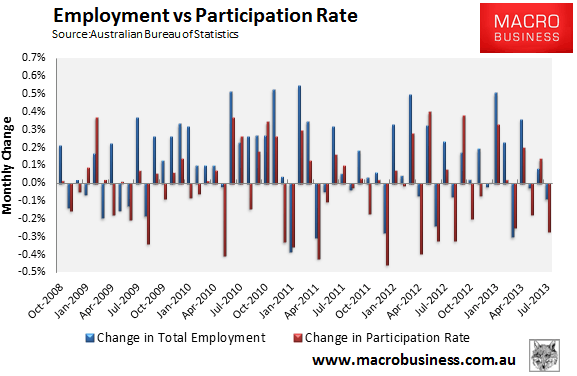
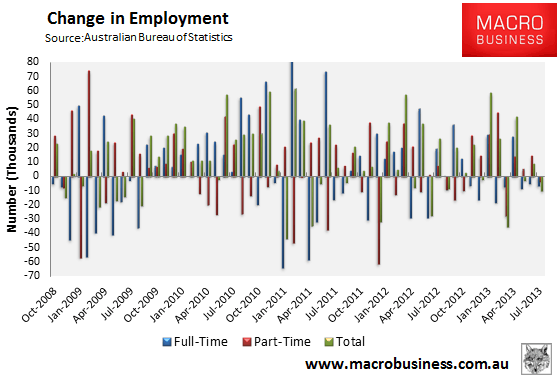
Total employment has registered virtually no growth over the past six months (see next chart).
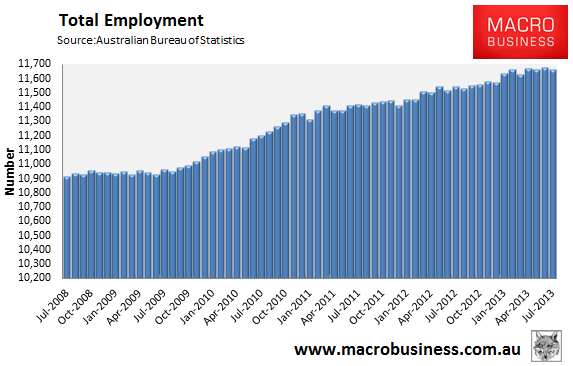
However, Australia’s employment market continues to rebalance away from the Western Australia, although the loss of jobs in South Australia is worrying:
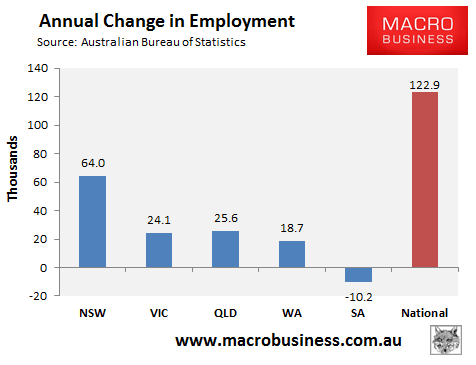
The variance of unemployment rates across the four major states has also narrow significantly recently, also suggesting the labour market is slowly rebalancing away from mining. But the deterioration in Tasmania and South Australia is concerning:
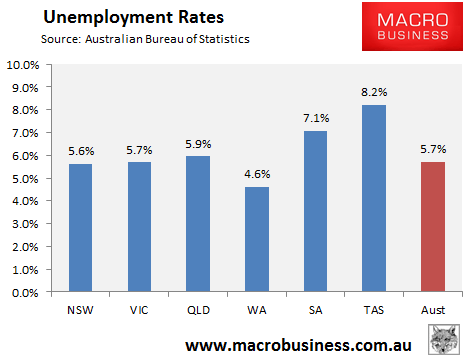
The state seasonally-adjusted figures are notoriously volatile and subject to a big margin of error. As such, the below chart shows the ABS’ trend unemployment rates, which shows Western Australia with the lowest unemployment, Tasmania and South Australia with the highest (and deteriorating), and the others close together around the national average:
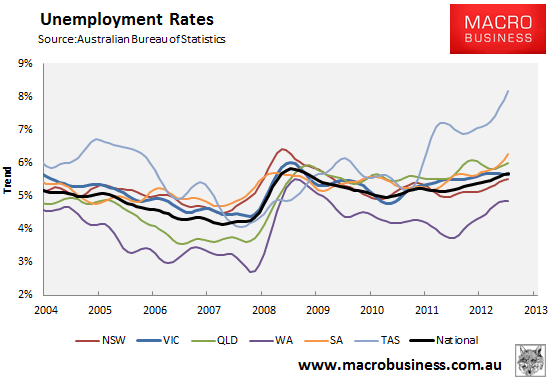
A big positive from this release is that the aggregate number of hours worked rose by 0.5% nationally in July to an all-time high, and is up 1.7% over the year:
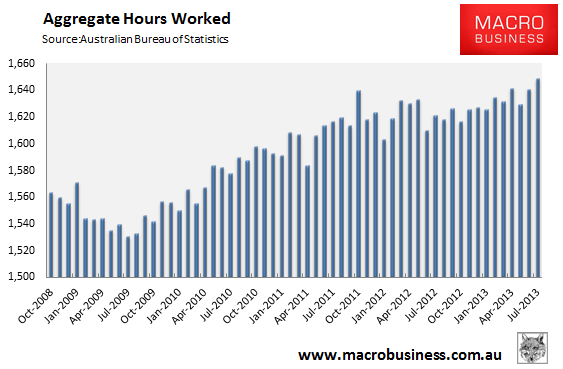
The growth in annual hours worked has been driven by Queensland. whereas hours worked in South Australia has tanked:
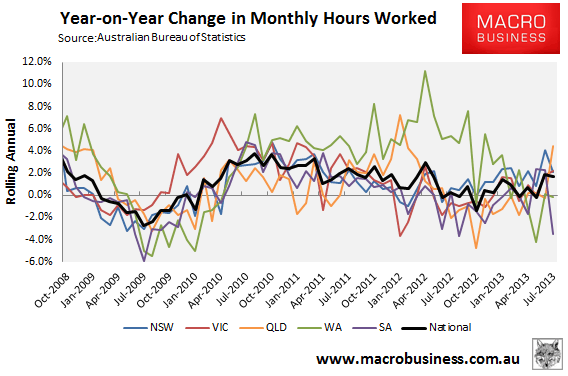
The below chart, which tracks the changes on a trend basis, shows the situation more clearly:
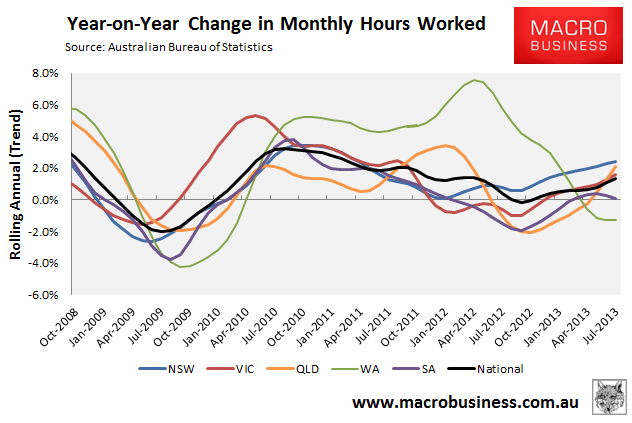
The weakening labour market, combined with Australia’s ageing population, has seen the employment-to-population ratio fall to its lowest level since April 2006:
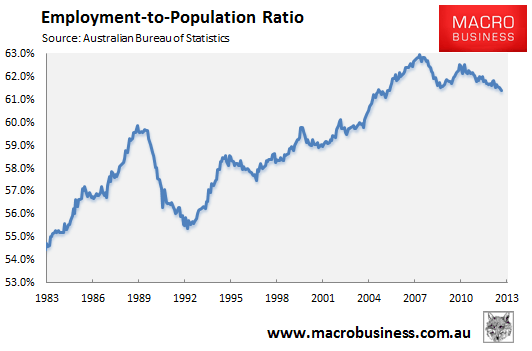
And to wrap up, the below chart summarises the annual change in the key employment aggregates:
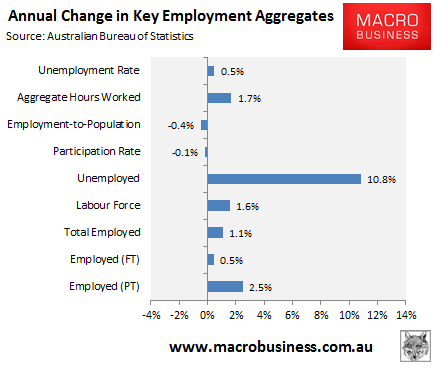
Overall, you can see from the above that the Australian labour market remains soft, with jobs growth currently below the level required to absorb population growth (with most of the growth in employment part-time), and both the employment-to-population ratio and participation rate continuing to trend down. On the positive side of the ledger, growth in aggregate hours worked is improving and the labour market has become more balanced, with less reliance on the mining sector to drive jobs growth.

